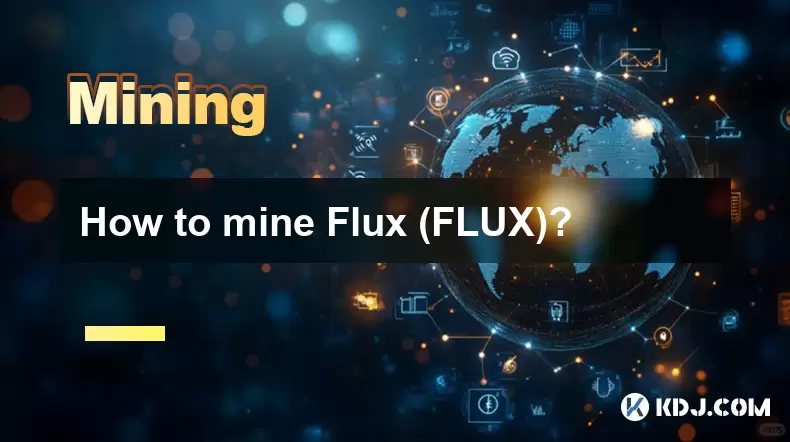-
 Bitcoin
Bitcoin $117,892.7399
-0.88% -
 Ethereum
Ethereum $3,436.0662
8.30% -
 XRP
XRP $3.2599
10.11% -
 Tether USDt
Tether USDt $1.0002
0.01% -
 BNB
BNB $717.3007
3.34% -
 Solana
Solana $176.4021
5.42% -
 USDC
USDC $0.9997
-0.02% -
 Dogecoin
Dogecoin $0.2159
6.54% -
 TRON
TRON $0.3116
3.64% -
 Cardano
Cardano $0.8084
7.68% -
 Hyperliquid
Hyperliquid $46.2989
-3.74% -
 Stellar
Stellar $0.4732
1.54% -
 Sui
Sui $4.0022
-0.66% -
 Chainlink
Chainlink $17.1611
3.71% -
 Hedera
Hedera $0.2461
3.30% -
 Bitcoin Cash
Bitcoin Cash $496.6743
-0.74% -
 Avalanche
Avalanche $22.9305
3.52% -
 Shiba Inu
Shiba Inu $0.0...01446
3.31% -
 UNUS SED LEO
UNUS SED LEO $8.8124
-0.07% -
 Toncoin
Toncoin $3.2407
4.13% -
 Litecoin
Litecoin $100.2127
2.57% -
 Polkadot
Polkadot $4.2312
2.34% -
 Monero
Monero $340.1485
1.97% -
 Pepe
Pepe $0.0...01370
3.49% -
 Uniswap
Uniswap $8.9383
-2.38% -
 Bitget Token
Bitget Token $4.7134
0.59% -
 Dai
Dai $0.9998
-0.04% -
 Ethena USDe
Ethena USDe $1.0003
-0.03% -
 Aave
Aave $323.6890
-1.90% -
 Bittensor
Bittensor $429.1624
-3.39%
How to mine Flux (FLUX)?
Flux (FLUX) is a decentralized blockchain platform enabling users to mine tokens, host dApps, and run nodes using a proof-of-work consensus.
Jul 14, 2025 at 04:21 pm

Understanding Flux (FLUX) and Its Blockchain
Flux (FLUX) is a decentralized blockchain platform that enables users to run applications, host websites, and mine its native token FLUX. Built on the Zcash protocol, Flux uses a proof-of-work consensus mechanism, allowing miners to contribute computational power in exchange for FLUX tokens. Unlike traditional blockchains, Flux supports a distributed computing network called FluxOS, which allows nodes to function as both miners and hosts for decentralized services.
Before diving into mining, it's essential to understand the core components of the Flux ecosystem:
- Node hosting: Running a full node contributes to network stability.
- Mining rewards: Block rewards are distributed based on hashing power contribution.
- Decentralized applications (dApps): The network supports running lightweight dApps directly on miner nodes.
Setting Up Your Mining Environment
To begin mining FLUX, you need to ensure your system meets the minimum requirements:
- A 64-bit operating system (Linux, Windows, or macOS).
- At least 4GB RAM (8GB recommended).
- A GPU with at least 3GB VRAM (NVIDIA GPUs perform better due to CUDA support).
- A stable internet connection.
You should also set up a wallet address to receive FLUX rewards. You can use the official Flux wallet or any compatible Zcash-based wallet like Electrum-FLUX. Make sure to securely store your wallet’s private keys and recovery phrase.
Next, download and install the Flux daemon from the official GitHub repository. This will allow your machine to sync with the Flux blockchain and participate in mining activities.
Choosing a Mining Software
Several mining software options support FLUX mining:
- EWBF’s CUDA Miner: Popular among NVIDIA GPU users.
- TeamRedMiner: Optimized for AMD GPUs.
- ZEnemy: Supports both AMD and NVIDIA cards with high efficiency.
Each miner has its own configuration method. For example, EWBF’s CUDA Miner requires creating a .bat file containing the mining command with your wallet address and pool server details. Here's an example command line:
miner.exe --server pool.flux.zelcore.io --port 12233 --user YOUR_WALLET_ADDRESS --pass xMake sure to replace YOUR_WALLET_ADDRESS with your actual FLUX wallet address. Save this file as start.bat and double-click to launch the miner.
Joining a Mining Pool
Solo mining FLUX is not practical due to the high difficulty level. Therefore, joining a mining pool is highly recommended. Pools combine hashing power from multiple miners to increase the chances of solving blocks and distributing rewards proportionally.
Some popular FLUX mining pools include:
- Pool.flux.zelcore.io
- Stratum+tcp://flux.minexmr.com:4444
When choosing a pool, consider factors such as:
- Pool fees: Most pools charge between 0% to 1% fee.
- Payout frequency: Look for pools offering daily or hourly payouts.
- Server location: Lower latency improves mining efficiency.
Once you’ve selected a pool, update your mining software configuration with the correct server IP, port, and wallet address.
Optimizing Mining Performance
To maximize your mining output, it's important to fine-tune your setup:
- Adjust intensity settings: Higher intensity increases hash rate but may cause instability.
- Monitor temperatures: Ensure your GPU doesn’t overheat by adjusting fan speeds.
- Use overclocking tools: Tools like MSI Afterburner help boost performance without damaging hardware.
For NVIDIA GPUs, tweaking parameters like Power Target, Core Clock, and Memory Clock can significantly enhance hashrate. Similarly, AMD users can adjust voltage curves and clock speeds via tools like Trixx or Radeon WattMan.
Also, ensure that your power supply unit (PSU) can handle the increased load from mining operations. It's advisable to use a modular PSU rated at least 500W–750W, depending on the number of GPUs used.
Troubleshooting Common Issues
During mining, you might encounter issues such as:
- Connection timeouts: Check your firewall or antivirus software blocking the miner.
- Low hashrate: Ensure drivers are updated and mining software is optimized for your GPU model.
- Wallet errors: Confirm that the wallet address is correctly entered in the mining script.
If syncing the Flux daemon takes too long, try using a bootstrap file to speed up the initial synchronization. These files are often available on community forums or GitHub repositories.
Additionally, monitor the Flux Discord server or Telegram group for real-time updates and troubleshooting tips from experienced miners.
Frequently Asked Questions
Q: Can I mine FLUX with a CPU?
A: While technically possible, CPU mining FLUX is inefficient compared to GPU mining. The network difficulty makes GPU mining the preferred choice.
Q: Is there a minimum payout threshold for FLUX mining pools?
A: Yes, most pools have a minimum payout threshold, typically around 0.5 FLUX. Below this amount, earnings remain in your account until they reach the threshold.
Q: Do I need to keep my wallet open while mining?
A: No, once you've configured your mining software with the correct wallet address, you don't need to keep the wallet application open. Rewards will still be sent to your address.
Q: What happens if my mining rig shuts down unexpectedly?
A: If your mining rig stops, your share submissions will pause. Once restarted, the miner will reconnect to the pool and resume submitting shares. There’s no loss of previously earned FLUX.
Disclaimer:info@kdj.com
The information provided is not trading advice. kdj.com does not assume any responsibility for any investments made based on the information provided in this article. Cryptocurrencies are highly volatile and it is highly recommended that you invest with caution after thorough research!
If you believe that the content used on this website infringes your copyright, please contact us immediately (info@kdj.com) and we will delete it promptly.
- Trump, Meme Coins, and Tokens: A Wild Ride in Crypto
- 2025-07-17 18:50:12
- Ripple's EU Expansion: RLUSD Takes Center Stage, XRP's Role Defined
- 2025-07-17 18:30:12
- XRP Whale Alert: $73M Moved to Coinbase – Correction Incoming?
- 2025-07-17 19:10:14
- Sui (SUI), Mutuum Finance (MUTM), and DeFi Adoption: A Tale of Two Trajectories
- 2025-07-17 19:10:14
- Crypto Bills, ETH Surge, and Buybacks: Decoding the Latest Moves
- 2025-07-17 19:50:11
- Shiba Inu's ATH Ambitions: Can It Outpace the Competitors?
- 2025-07-17 18:30:12
Related knowledge

How are crypto mining profits taxed?
Jul 14,2025 at 12:28am
Understanding Cryptocurrency Mining and TaxationCryptocurrency mining involves validating transactions on a blockchain network and earning rewards in ...

How to keep a mining rig cool
Jul 12,2025 at 01:42pm
Understanding the Importance of Cooling in Mining RigsCryptocurrency mining is an intensive process that places heavy demand on hardware components, p...

How to mine crypto on a gaming PC
Jul 16,2025 at 12:00pm
What is Crypto Mining on a Gaming PC?Crypto mining involves using your computer's processing power to validate transactions on a blockchain network. A...

How to set up a crypto miner
Jul 16,2025 at 09:14am
Understanding Ethereum Gas Fees: What Are They and How Do They Work?Ethereum gas fees are a fundamental aspect of the network, representing the cost r...

Can you mine crypto on a laptop?
Jul 16,2025 at 02:21am
Is It Feasible to Mine Cryptocurrency on a Laptop?Mining cryptocurrency on a laptop is technically possible, but feasibility depends heavily on the ha...

Is crypto mining worth it?
Jul 16,2025 at 01:21am
Understanding the Basics of Crypto MiningCrypto mining refers to the process of validating transactions on a blockchain network by solving complex mat...

How are crypto mining profits taxed?
Jul 14,2025 at 12:28am
Understanding Cryptocurrency Mining and TaxationCryptocurrency mining involves validating transactions on a blockchain network and earning rewards in ...

How to keep a mining rig cool
Jul 12,2025 at 01:42pm
Understanding the Importance of Cooling in Mining RigsCryptocurrency mining is an intensive process that places heavy demand on hardware components, p...

How to mine crypto on a gaming PC
Jul 16,2025 at 12:00pm
What is Crypto Mining on a Gaming PC?Crypto mining involves using your computer's processing power to validate transactions on a blockchain network. A...

How to set up a crypto miner
Jul 16,2025 at 09:14am
Understanding Ethereum Gas Fees: What Are They and How Do They Work?Ethereum gas fees are a fundamental aspect of the network, representing the cost r...

Can you mine crypto on a laptop?
Jul 16,2025 at 02:21am
Is It Feasible to Mine Cryptocurrency on a Laptop?Mining cryptocurrency on a laptop is technically possible, but feasibility depends heavily on the ha...

Is crypto mining worth it?
Jul 16,2025 at 01:21am
Understanding the Basics of Crypto MiningCrypto mining refers to the process of validating transactions on a blockchain network by solving complex mat...
See all articles

























































































